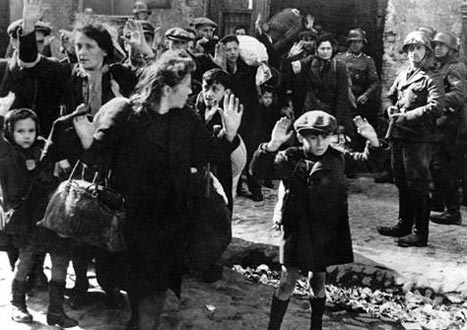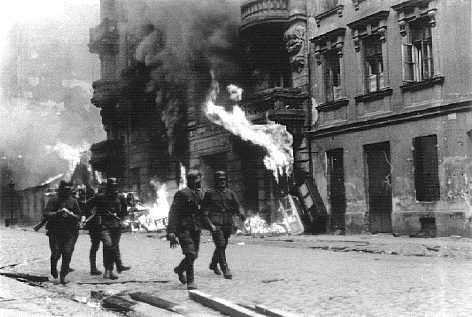All resistance in the Jewish ghetto in Warsaw ended after 28 days of fighting.
In his operational report, the local SS commander, Brigadier Juergen Stroop, said the uprising began on 19 April when SS, police and Wehrmacht units using tanks and other armoured vehicles entered the ghetto to take Jews to the railway station for transportation to concentration camps.
They were repelled by Jews using homemade explosives, rifles, small arms and “in one case a light machine-gun”.
He said his troops were involved in pitched battles day and night with groups of about 20 or 30 Jews…both men and women.
“On April 23 Himmler issued his order to complete the combing out of the Warsaw ghetto with the greatest severity and relentless tenacity. I therefore decided to destroy the entire Jewish residential area by setting every block on fire.”
The last battle ended with the destruction of the Great Synagogue.
The Nazis created the Jewish ghetto in Warsaw in 1940 and about 500,000 people were crammed into an area not bigger than one square mile (2·6 sq km).
Its inhabitants were systematically transported to Treblinka and those who fought in the legendary Jewish uprising would rather have died with dignity than be taken to the death camps.
About 50 of the 1,000 fighters escaped through the sewers and some fought in the second Warsaw uprising by the Polish Home Army in August 1944.
About 40,000 Jews were massacred in reprisal for the uprising. When Soviet troops liberated Warsaw on 17 January 1945 only about 200 Jews remained and the old city had been virtually destroyed.
Stroop’s copy of the operational report entitled “The Jewish quarter in Warsaw no longer exists” came to light during the Nuremberg war crimes trial in 1945.
Stroop himself was sentenced to death by a US military tribunal and sent to Poland to be executed in 1951.



